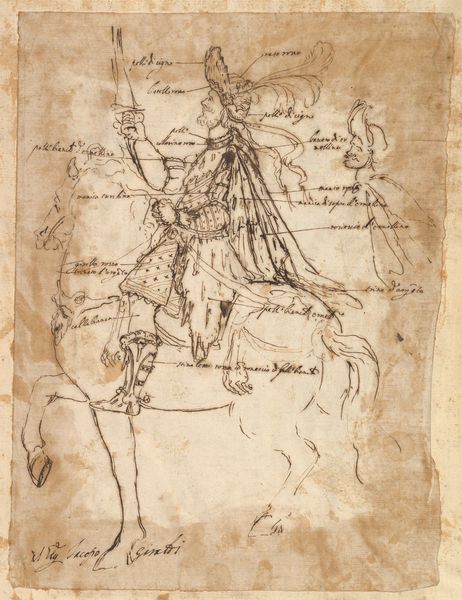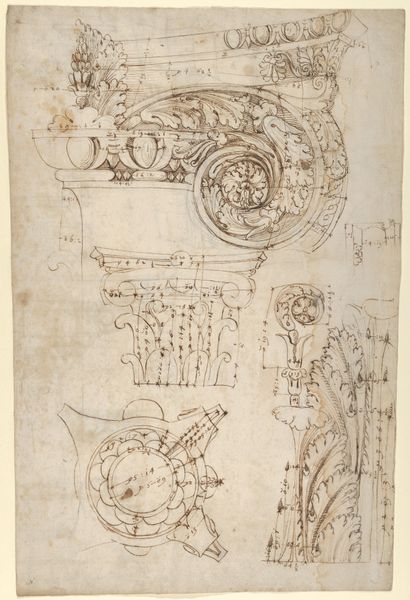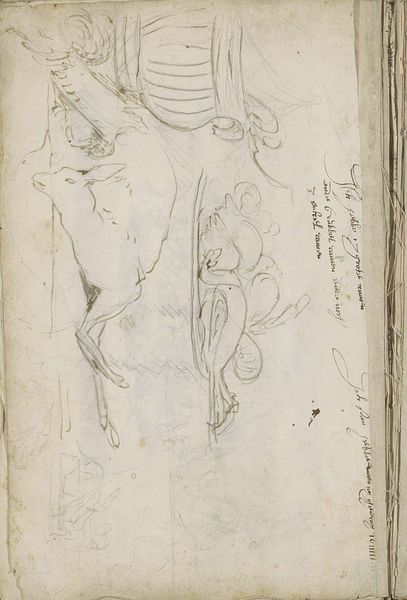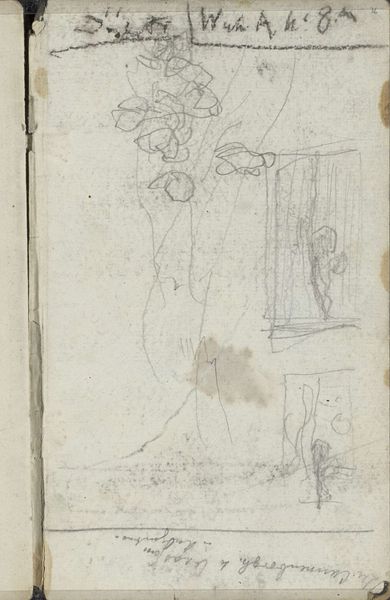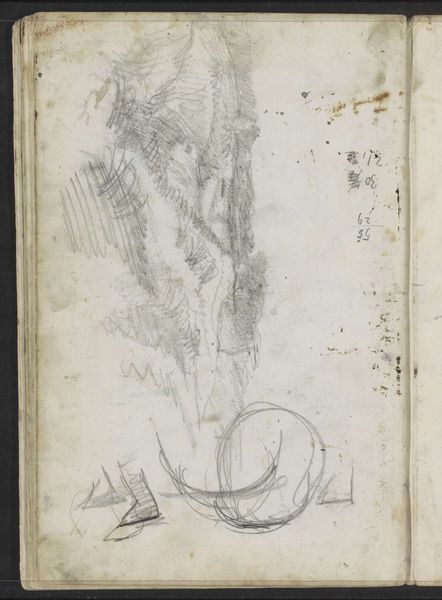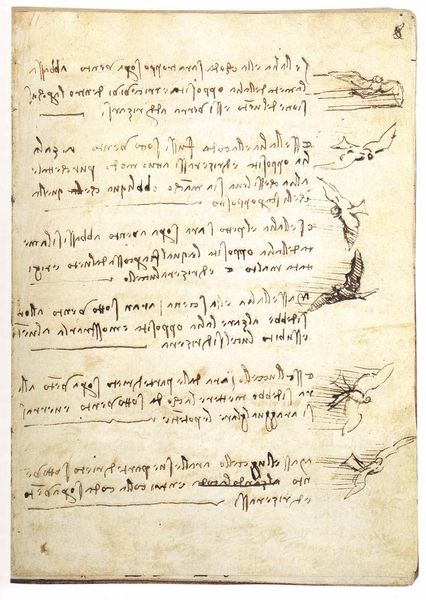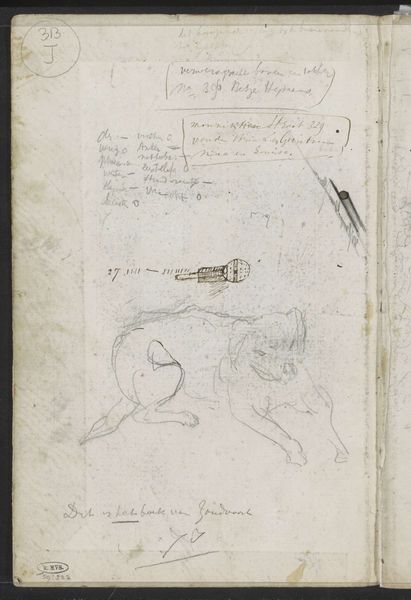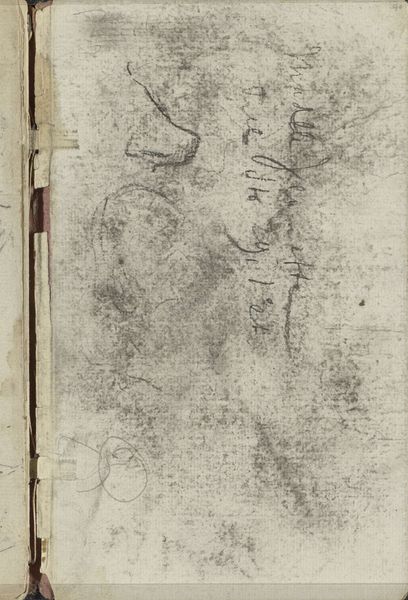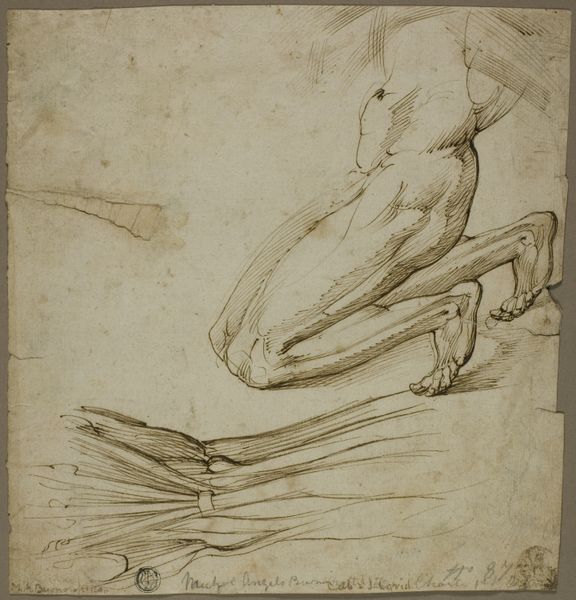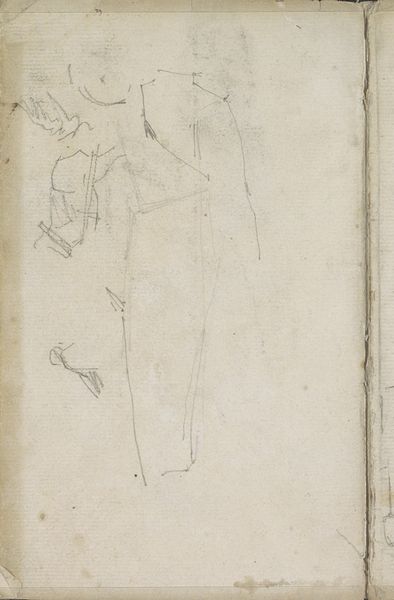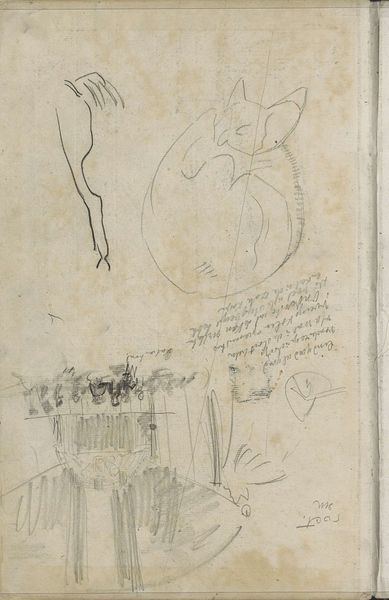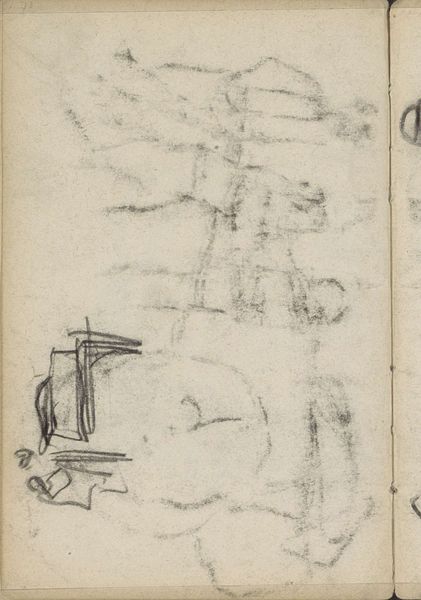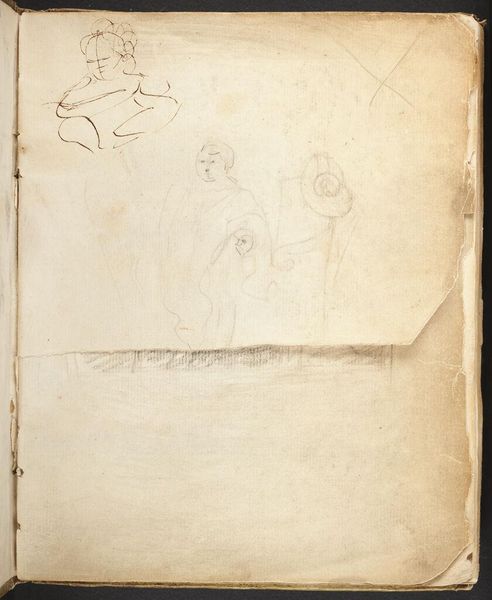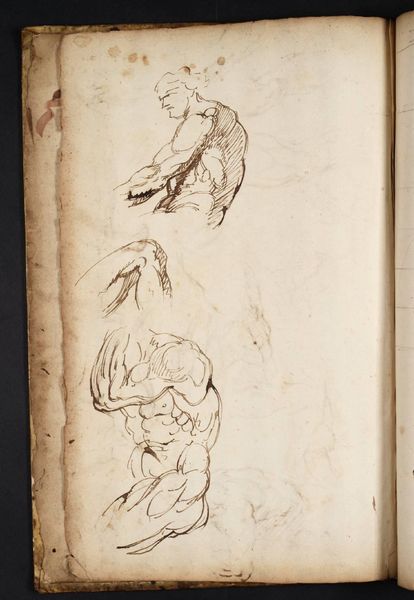
drawing, ink
#
portrait
#
drawing
#
ink painting
#
figuration
#
11_renaissance
#
ink
#
italian-renaissance
Copyright: Public domain
Curator: Here we have Leonardo da Vinci's "Coition of a Hemisected Man and Woman," an ink drawing from around 1492. The fragility of the line is striking. It feels so tentative, as though Da Vinci were charting unknown territory, literally and figuratively. Editor: It's undeniably clinical, isn't it? A sort of cold dissection laid bare on the page. Even in the subject, that shared form almost devoid of tenderness suggests a pursuit of knowledge, not passion. What visual metaphors do you see at play? Curator: The intermingling of the figures' innards with his characteristic script forces us to consider drawing and writing as allied artisanal processes. The labor here isn't just in observation, it's in transcribing observation through controlled manual dexterity. Note the way the organs are so delicately rendered, they have a lifelike texture and composition on their own, just like an abstract expressionist composition. Editor: True. But notice how he presents the heart and the entwined intestines—classic symbols for love and familial connection—exposed, vulnerable. Da Vinci subverts those symbols, laying them bare. It prompts one to reflect: Does anatomical truth extinguish emotional mystery? Curator: Well, the anatomical exactitude itself signifies the new materialist science emerging from the late medieval world. You’re right, though; it prompts interesting questions about truth and artifice in representing the body. His ink isn’t cheap either. Think about the economic capital needed for access to parchment and the production of this rich ink itself in 1492. He had resources, connections. Editor: I see this as a powerful articulation of the boundaries between mind and body, intellectual pursuit versus lived experience. Those exposed arteries and veins resemble branching roots or perhaps a river system on a map – a powerful metaphor for the complex interconnectedness between the emotional and the tangible in humanity itself. What a convergence of iconographic depth with rational inquiry! Curator: Right, his means became as important to his discoveries. I mean, imagine being someone else at that time to get access to human corpses to draw these pictures! The work definitely points toward Renaissance social power structures. Editor: Ultimately, it prompts a dialogue across centuries. Between observation and symbol, the artist, and ourselves, seeking knowledge, grappling with mortality, through his eyes and with a piece of ancient ink. Curator: Indeed. It reminds me that art always stems from practical action and that our present view will one day seem historical.
Comments
No comments
Be the first to comment and join the conversation on the ultimate creative platform.
